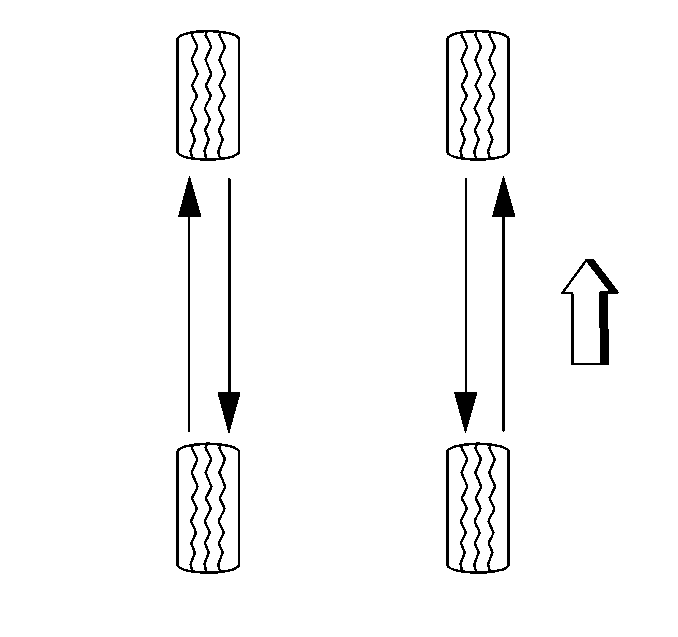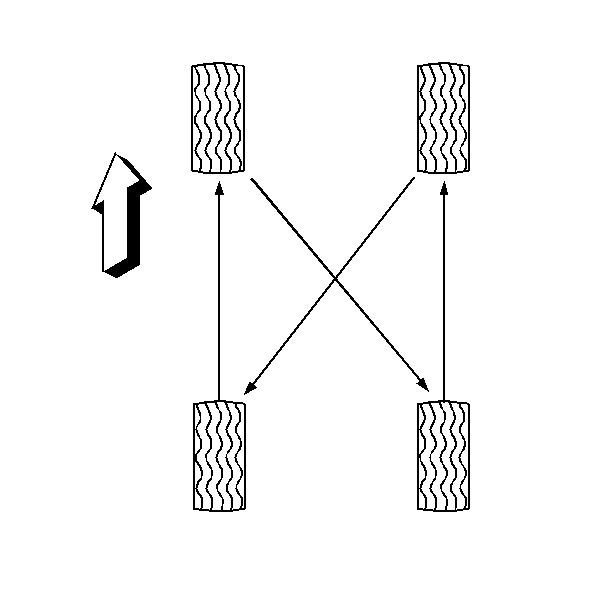Tire Rotation Directional
Rotate the tires and wheels at frequent intervals to equalize wear. Refer to Maintenance Schedule in Maintenance and Lubrication. In addition to scheduled rotation, rotate the tire and wheel whenever uneven tire wear is noticed.
Radial tires tend to wear faster in the shoulder area, particularly in front positions. Radial tires in non-drive locations may develop an irregular wear pattern that may increase tire noise. This makes regular rotation especially necessary. Refer to Tire and Wheel Removal and Installation .

Always use a 4-wheel rotation. After rotation, check the wheel nuts for specified torque. Refer to Fastener Tightening Specifications . Then, set the tire pressure. Refer to Tire Inflation Pressure Specifications in Maintenance and Lubrication.
Tire Rotation Non-Directional
Rotate the tires and wheels at frequent intervals to equalize wear. Refer to Maintenance Schedule in Maintenance and Lubrication. In addition to scheduled rotation, rotate the tire and wheel whenever uneven tire wear is noticed.
Radial tires tend to wear faster in the shoulder area, particularly in front positions. Radial tires in non-drive locations may develop an irregular wear pattern that may increase tire noise. This makes regular rotation especially necessary. Refer to Tire and Wheel Removal and Installation .

Always use a 4-wheel rotation. After rotation, check the wheel nuts for specified torque. Refer to Fastener Tightening Specifications . Then, set the tire pressure. Refer to Tire Inflation Pressure Specifications in Maintenance and Lubrication.
